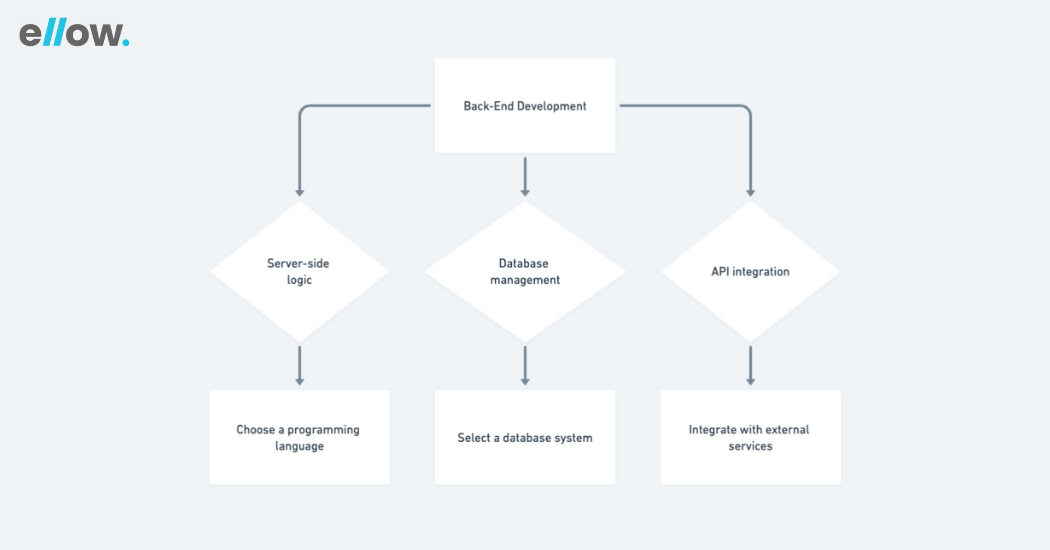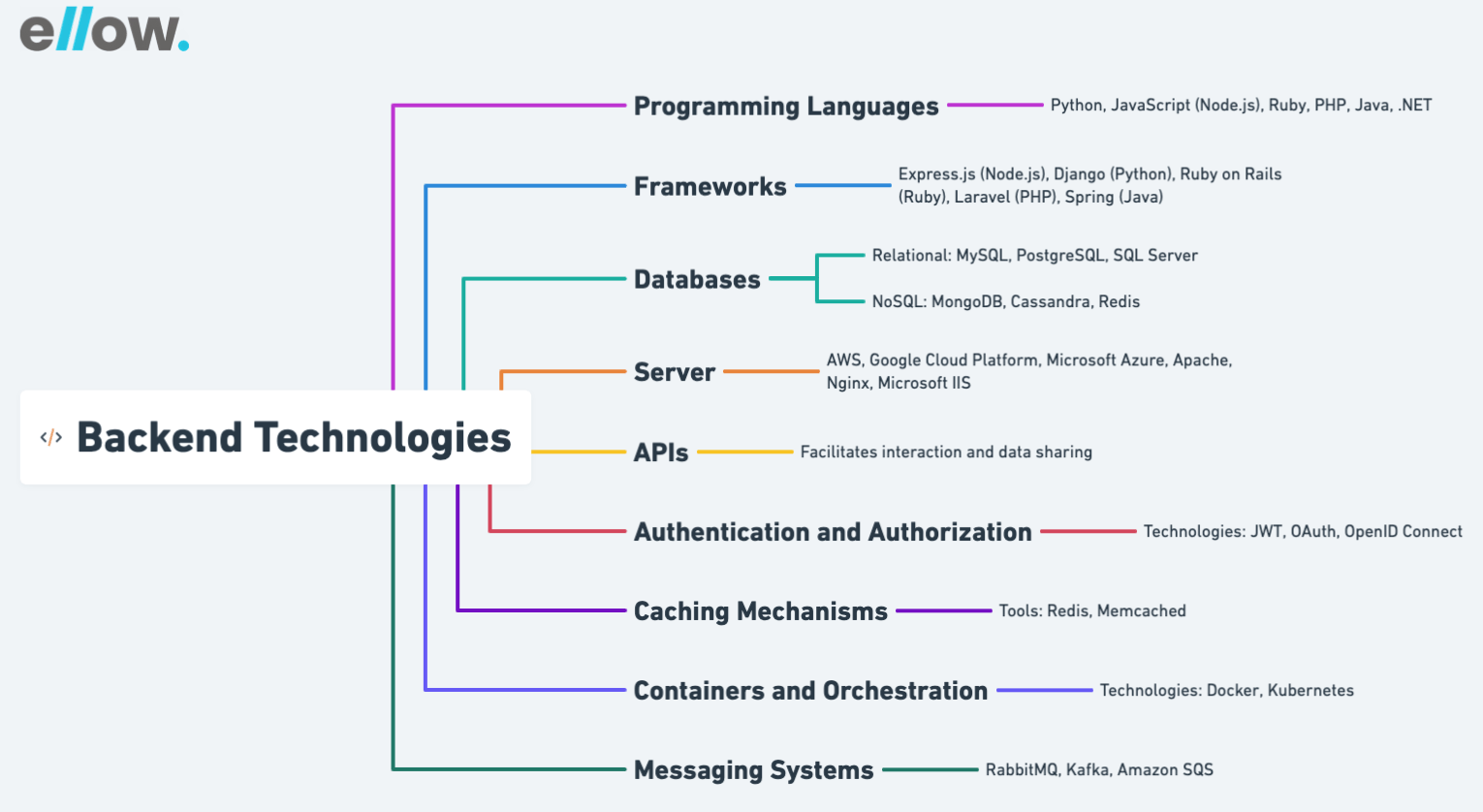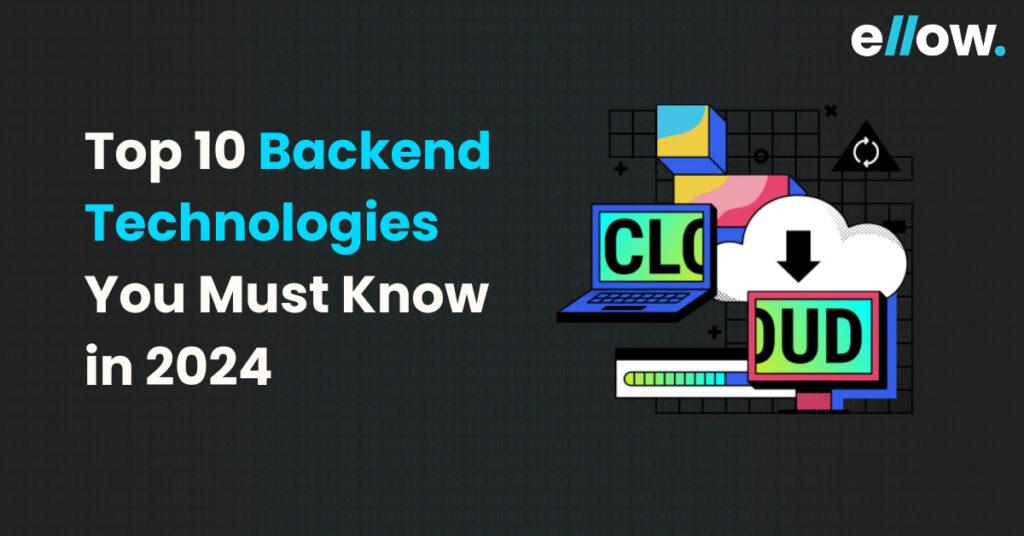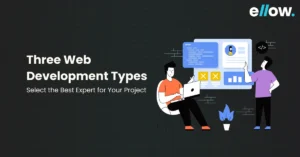Backend technology is an important component in software development. Whether you are steering a startup, overseeing IT operations, or making corporate decisions, the choice of backend technology holds great significance for your project’s victory.
Backend technologies play a pivotal role in the day-to-day development of software projects, ensuring scalability, rapid functionality, and prompt responses to customer queries.
This article sheds light on various backend technologies, hosting options, and service providers, demystifying their features, advantages, and limitations. Navigating through the abundance of options can be daunting, especially for non-programmers.
Hence, this guide seeks to simplify the decision-making process by presenting a comprehensive overview of the top 10 backend technologies.
By delving into the intricacies of each technology, we hope to empower back-end developers, front-end developers, and full-stack developers to make informed choices that contribute to the success of their projects.
What is Back-End Development?

Back-end development refers to the server-side of software development that focuses on everything that happens behind the scenes of a web application or website. This aspect of development deals with the database, server, and application logic, essentially everything that users don’t see but that powers the front end or the user interface.
Unlike front-end development, which deals with what users see and interact with directly, back-end development involves managing the infrastructure that powers websites. This encompasses tasks such as handling databases, servers, and applications.
Read more about top front-end technologies.
The responsibilities of back-end developers extend to managing various system components, streamlining business processes, designing data architecture, and creating APIs (Application Programming Interfaces) and libraries. They use a variety of tools, programming languages, and technologies to effectively carry out these tasks.
Additionally, back-end developers work with databases such as MongoDB, Oracle, MySQL, and SQL servers to perform operations on data, including creating, reading, updating, and deleting information.
These operations are conducted behind the scenes before the data is presented to the front end, which is what users interact with. Back-end development is essential for ensuring the functionality and operation of a website or web application.
Globally, recruiters reported that the highest demand for IT roles in 2023 was observed in back-end and full-stack developers.
What are Backend Technologies?
Backend technologies have a set of tools, languages, and frameworks essential for building the server side of web applications. These components operate behind the scenes, managing servers, databases, and the application logic that enables communication between the server and the user’s browser on the front end.
Key Components and Technologies

- Programming Languages:
- Essential for crafting the logic that runs on the server side.
- Examples: Python, JavaScript (Node.js) for asynchronous event-driven programming, Ruby, PHP for dynamic web content, Java, and .NET for enterprise environments, among others.
- Frameworks:
- Pre-written, reusable code libraries that streamline development.
- Examples: Express.js (for Node.js), Django (for Python), Ruby on Rails (for Ruby), Laravel (for PHP), and Spring (for Java).
- Databases:
- Crucial for storing, retrieving, and managing application data.
- Relational Databases: MySQL, PostgreSQL, and SQL Server use structured query language for managing data.
- NoSQL Databases: MongoDB (document-oriented), Cassandra (wide-column), and Redis (key-value store) are designed for scalability and flexibility in handling large volumes of unstructured data.
- Server:
- Servers can be deployed on both physical hardware and cloud-based platforms to host applications.
- Examples: AWS, Google Cloud Platform, and Microsoft Azure offer scalable cloud services. Apache and Nginx are popular open-source web servers, while Microsoft IIS is used for hosting ASP.NET applications.
- APIs (Application Programming Interfaces):
- Facilitate the interaction between different software components and external services, allowing them to communicate and share data.
- Usage: Enables third-party services integration, front-end and back-end communication, and access to application functionalities externally.
- Authentication and Authorization:
- Essential for securing applications by verifying user identities and granting access to resources.
- Technologies: JSON Web Tokens (JWT) for secure transmission of information, OAuth for third-party authorization, and OpenID Connect for authentication across services and platforms.
- Caching Mechanisms:
- Improve application performance by temporarily storing copies of frequently accessed data.
- Tools: Redis and Memcached are widely used for their high performance and scalability in caching.
- Containers and Orchestration:
- Facilitate consistent application deployment and scaling across various environments.
- Technologies: Docker for containerization allows applications to run in isolated environments, while Kubernetes automates deployment, scaling, and management of containerized applications.
- Messaging Systems:
- Support asynchronous communication and coordination across different parts of an application or between different applications.
- Examples: RabbitMQ and Kafka are ideal for complex routing and processing of messages, while Amazon SQS offers a managed queue service for handling message-oriented middleware.
Top 10 Back-end Technologies
1. Python
Python is a general-purpose, dynamically interpreted programming language gaining immense popularity in various domains, including web development, machine learning, AI, and scientific research.
Why is Python Useful?
- Its simplicity is a key strength, making it accessible for both beginners and experienced developers.
- The vast array of libraries and frameworks significantly reduces the need to build functionalities from scratch.
- Platform independence ensures code can run on various operating systems without modifications.
Who Uses Python?
- NASA
- Spotify
- Amazon
Check out this article to learn about global companies that use Python.
2. JavaScript
JavaScript stands out for its versatility, being useful in both front-end and back-end development. It enables superior interoperability, seamless third-party integration, and dynamic web interfaces.
Why is JavaScript Useful?
- Executes basic functionalities on the client-side, reducing backend load.
- Supports asynchronous processing for efficient execution of multiple code blocks.
- Dynamic data types enhance code quality and standards compliance.
Who Uses JavaScript?
- eBay
- Uber
- PayPal
- Netflix
- Microsoft
3. C#
C# (C-Sharp) was initially a closed-source language by Microsoft but later became open-source. It is widely used in gaming app development, Windows development, cloud-based services, and enterprise software.
Why is C# Useful?
- oasts an active developer community for continuous improvement and support.
- Offers efficient interoperability across platforms and is scalable.
- High-level coding technology simplifies coding and debugging processes.
Who Uses C#?
- Stack Overflow
- GoDaddy
- Evernote
- NASA
4. Java
Java excels in running code seamlessly across different environments, making it suitable for enterprise application development, fintech solutions, and embedded systems.
Why is Java Useful?
- Offers simplicity in implementation and intuitive use.
- Provides high-end security features for creating secure applications.
- Supports multi-threaded processing for executing multiple tasks simultaneously.
Who Uses Java?
- Airbnb
- Amazon
- Netflix
You may want to read this article to discover the best Java certifications available.
5. Kotlin
Kotlin is recommended for Android development and is a general-purpose, statically typed language that fully supports Java, offering improved readability, conciseness, and fewer bugs.
Why is Kotlin Useful?
- Features a powerful web development stack and class extension capabilities.
- Ensures Java interoperability, allowing the use of both Kotlin and Java functionalities.
- Makes efficient use of computational resources.
Who Uses Kotlin?
- Slack
- Trello
- Atlassian
- Uber
- Coursera
6. PHP
PHP, a popular language since 1997, is effective for handling dynamic content, databases, and eCommerce sites. It stands out for its simplicity, flexibility, and short learning curve. Dive deeper into the advantages and disadvantages of PHP by exploring our comprehensive analysis in this dedicated blog post.
Why is PHP Useful?
- Flexible usage with modern JavaScript frameworks, Python, and HTML.
- Optimized scripting language with logical syntax, facilitating easy application creation and optimization.
- Cost-efficient, developer-friendly with easy integration and compatibility.
Who Uses PHP?
- WordPress
- Tumblr
- Wikipedia
- Etsy
- MailChimp
7. Node.js
Although not a programming language, Node.js is included for its JavaScript-based nature. It facilitates both backend and frontend development within a unified programming language framework, supporting high-performance applications. For a deeper dive into how Node.js compares with React.js, especially in terms of their distinct roles in web development, check out our detailed analysis in Node.js vs. React.js: A Comprehensive Comparison.
Why is Node.js Useful?
- Simplifies development and deployment by using a single programming language for both backend and frontend.
- Utilizes Google’s V8 engine for rapid code execution and seamless performance.
- Benefits from active community support, providing cutting-edge tools and extensive documentation.
Who Uses Node.js?
- Medium
- Trello
- Walmart
- Yahoo
8. Ruby
Since 1993, Ruby has been a multi-paradigm language that excels in both functional and object-oriented programming. It is known for speeding up deployment and script efficiency.
Why is Ruby Useful?
- Emphasizes writing clean and readable code with simplified code changes.
- Creates highly secure applications, making it ideal for agile development.
- Supports easier development and configuration with the capability to run multiple programs concurrently.
Who Uses Ruby?
- Shopify
- SlideShare
- GitHub
- Bloomberg
- Fiverr
9. Rust
Since 2010, Rust has been recognized for its focus on safety and performance. It features an effective built-in library/dependency manager, Cargo, and is favored for its performance quality.
Why is Rust Useful?
- Cargo (Rust’s package manager) simplifies code writing and management.
- Eager for community support from professional developers worldwide.
- Prioritizes quality performance, comparable to C++/C but with better safety.
Who Uses Rust?
- Dropbox
- Amazon
- Microsoft
- Discord
10. Django
Django is a high-level Python web framework designed for rapid development and clean, pragmatic design. It encourages the use of reusable code, making it efficient for building web applications.
For an in-depth exploration of Django’s capabilities in backend development contrasted with React’s prowess in frontend frameworks, and understanding their unique contributions to web development, delve into our thorough review in Django vs. React: An In-Depth Comparison.
Why is Django Useful?
- Django follows the “Don’t Repeat Yourself” (DRY) principle, minimizing redundancy and promoting efficient coding.
- Django comes equipped with a wide array of built-in tools for tackling common web development challenges, including but not limited to user authentication, URL routing, and seamless database migrations.
- Designed with scalability in mind, Django can comfortably handle both small-scale projects and high-traffic, large-scale applications. I
Who Uses Django?
- Spotify
- Mozilla
- NASA
Must have Features of Back-End Technologies
Before selecting a backend technology, it is crucial to understand the features that define these technologies.
- Scalability
- The ability to easily scale up or down is vital for handling varying project demands.
- Ensures the application stays responsive and accessible, even as demand or data storage increases, without sacrificing performance or security.
- Security
- Security is a top priority for a backend language to protect sensitive user information.
- Back-end technologies must incorporate strong security measures, including data encryption, secure authentication mechanisms, and protection against common vulnerabilities like SQL injection, Cross-Site Scripting (XSS), and Cross-Site Request Forgery (CSRF).
- Regular security updates and patches are also essential to protect against new vulnerabilities.
- Maintainability
- The chosen language must support easy maintenance of the codebase.
- This includes clear documentation, consistent coding standards, and the use of design patterns that simplify understanding and modifying the codebase.
- A maintainable back-end allows teams to quickly adapt to new requirements or technologies without extensive rewrites or refactoring.
- Cost-effectiveness
- The total cost of ownership, including initial development and ongoing maintenance, is a vital consideration.
- Open-source technologies can reduce costs but may require more customization.
- On the other hand, commercial solutions may offer more out-of-the-box features but at a higher cost.
- Weigh the pros and cons of each option carefully to find the right balance.
- Community Support
- Strong community support is crucial for developers.
- Ensures quick access to help when facing coding challenges.
- The availability of tutorials and libraries enhances resources for project development.
Conclusion
Backend technologies are pivotal in software development, with the top 10 of 2024 providing a broad spectrum of choices. Careful consideration of each technology’s pros and cons is crucial for selecting the most suitable stack for your project, ensuring its success and alignment with your goals.
FAQs
What are backend technologies in software development?
Backend technologies form the foundational part of software development, handling server-side processes and data management to ensure smooth functionality.
Why is it important to stay updated on backend technologies in 2024?
Staying abreast of the latest backend technologies ensures developers are equipped with tools that enhance efficiency, security, and scalability in software projects.
How do I choose the right backend technology stack for my project?
Consider factors such as project requirements, scalability needs, and the strengths and weaknesses of each technology to make an informed decision on the most suitable backend stack.
What are some of the dominating backend technologies in 2024?
The article highlights the top 10 backend technologies that are currently dominating the market, providing insights into their features and applications.
How can understanding backend technologies benefit my development projects?
Understanding backend technologies empowers developers to make strategic decisions, optimizing project development by selecting the most appropriate tools for specific needs and goals.









